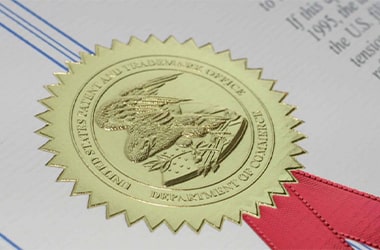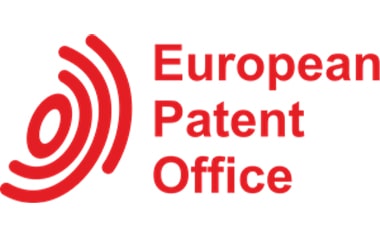براءات الإختراع
منذ العام 1989
حصل الدكتور سميح الطرابيشي حتى الأن على 7 براءات إختراع من الولايات المتحدة الأمريكية وأوروبا في جراحة المفاصل

Patent No: US 5702398 A
Publication Date of patent: Dec 30, 1997 A tension screw of the type is primarily intended for anchoring one end of a ligament graft to a bone during surgery to repair a damaged or torn ligament. The tension screw includes two principal elements: a cannulated screw and a bone screw which is insertable through the longitudinal bore of the cannulated screw. The bone screw actually anchors the graft to a bone, while the cannulated screw includes a small hook for attaching the ligament graft thereto. The cannulated screw is free to rotate around the bone screw so as to place the ligament graft under tension. Then, the bone screw is tightened into the bone, fixing the graft to the bone.

Patent No: US 20050020941 A1
Publication Date of patent: Jan 27, 2005 A dynamic spacer is provided for measuring flexion-extension gap during total knee arthroplasty. The dynamic spacer is an improved surgical instrumentation system that it easy to use, simple in construction, and accurately measures flexion-extension gaps under repeatable soft tissue tension. The dynamic spacer generally comprises a first planar member having a lower tissue engaging surface, a second planar member having an upper tissue engaging surface. A tensioner is disposed between the first planar member and the second planar member for applying a tensile force acting upon the first and second planar members. The tensioner is fixedly attached to the first and second planar members, such that the first planar member is held substantially parallel to the second planar member in the absence of compressive load. The dynamic spacer allows for accurately measuring flexion-extension gaps and angular deviation in flexion indicating the appropriateness of femoral rotation.

Patent No: US 7094259 B2
Publication Date of patent: Aug 22, 2006 The present invention generally comprises a fixed bearing prosthesis and a mobile bearing prosthesis. The fixed bearing prosthesis comprises a tibial component, a femoral component and a meniscal component and addressees the loss of congruency during deep knee flexion and the possible direct, repetitive contact of the tibial and femoral components. The tibial component of the fixed bearing prosthesis includes a tibial platform having an anterior and posterior edge. The meniscal component of the fixed bearing prosthesis includes a posterior ridge overlapping the posterior edge of the tibial platform that prevents metal-to-metal contact during deep knee flexion. The mobile bearing prosthesis comprises generally a tibial component, a femoral component and a meniscal component addresses the lack of conformity to natural biomechanical movement. The tibial component comprises a tibial platform having a curved rail system designed to mimic the asymmetrical rotation of femoral rollback while simultaneously providing sufficient anterior-posterior translation.

Patent No: US 7,455,647 B2
Publication Date of patent: Nov 25, 2008 A dynamic Spacer is provided for measuring flexion extension gab during total knee arthroplasty. The dynamic spacer includes a first planar member having a lower tissue engaging surface and a second planar member having an upper tissue engaging surface. A tensioner is disposed between the first planar member and the second planar member for applying a tensile force acting upon the first and second planar members. The tensioner is attached to the first and second planar members. such that the first planar member is held substantially parallel to the second planar member in the absence of compressive load. The dynamic spacer allows for accurately measuring flexion extension gaps and angular deviation in flexion indicating the appropriateness of femoral rotation.

Patent No: WO 2015105855 A1
Publication Date of patent: July 16, 2015 A device to aid in performing a revision surgery on a joint can comprise a body member having a bone facing bottom surface, an opposing top surface, a first end portion configured to be disposed on a bone, and a second end portion opposite the first end portion and configured to be disposed on the bone nearer to the joint relative to the first end portion; a connecting member attached to the body member and configured to extend beyond an end of the bone; and a guide member attached to the connecting member and including an opening configured to receive a cutting tool. The device can be sized and shaped based on a computed tomography scan of the bone, and the guide member can be configured so that when the device is installed on the bone, the longitudinal axis of the opening is aligned with a longitudinal direction of the bone.

Patent No: EP 3091910 A1
Publication Date of patent: Nov 16, 2016 A device to aid in performing a revision surgery on a joint can comprise: a body member having a bone facing bottom surface, an opposing top surface, a first end portion configured to be disposed on a bone, and a second end portion opposite the first end portion and configured to be disposed on the bone nearer to the joint relative to the first end portion; a connecting member attached to the body member and configured to extend beyond an end of the bone; and a guide member attached to the connecting member and including an opening configured to receive a cutting tool. The device can be sized and shaped based on a computed tomography scan of the bone, and the guide member can be configured so that when the device is installed on the bone, the longitudinal axis of the opening is aligned with a longitudinal direction of the bone.

Patent No: US 11,134,958 B2
Publication Date of patent: Oct 05, 2021 device to aid in performing a revision surgery on a joint can comprise : a body member having a bone facing bottom surface , an opposing top surface , a first end portion configured to be disposed on a bone , and a second end portion opposite the first end portion and configured to be disposed on the bone nearer to the joint relative to the first end portion ; a connecting member attached to the body member and configured to extend beyond an end of the bone ; and a guide member attached to the connecting member and including an opening configured to receive a cutting tool . The device can be sized and shaped based on a computed tomography scan of the bone , and the guide member can be configured so that when the device is installed on the bone , the longitudinal axis of the opening is aligned with a longitudinal direction of the bone .